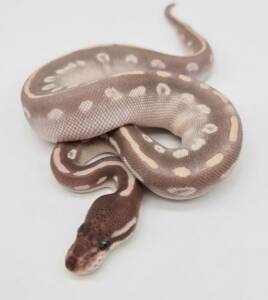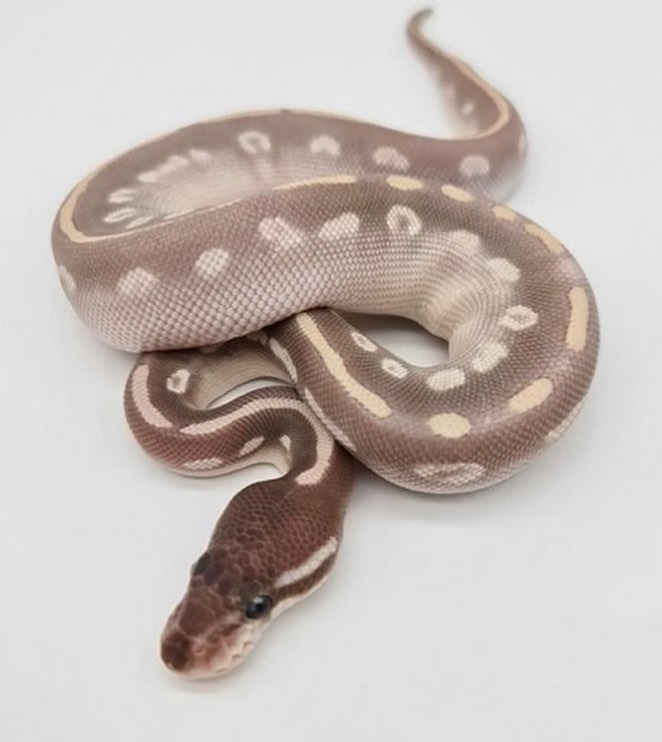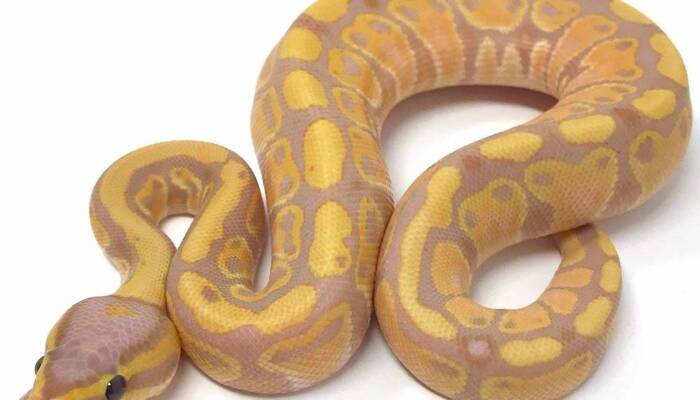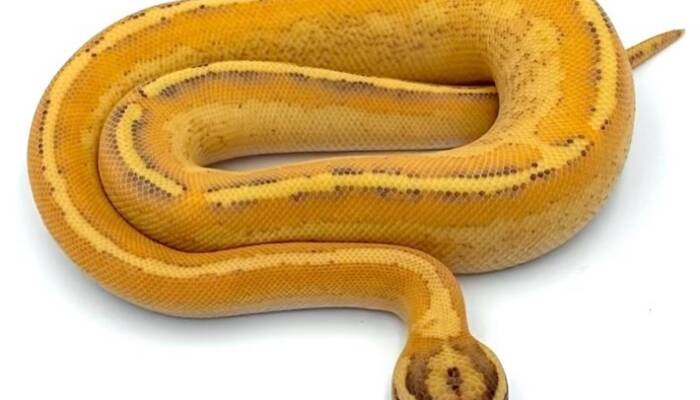Description
Purple Passion Ball Python for Sale
Are you looking to add a touch of exotic elegance to your reptile collection? Look no further than the Purple Passion Ball Python! At Ranch of Exotic Breeds, we are thrilled to offer this mesmerizing morph for sale. Known for its striking coloration and docile temperament, the Purple Passion Ball Python is a must-have for both seasoned herpetologists and first-time snake owners.
In this guide, we’ll dive into everything you need to know about this unique snake, including its appearance, care requirements, and why it’s a fantastic addition to your collection. Plus, we’ve included a helpful FAQ section to answer all your questions. Let’s get started!
The Purple Passion Ball Python is a breathtaking morph that combines the genes of Mojave and Phantom Ball Pythons. Its lavender and purple hues, paired with a clean, patternless belly, make it one of the most sought-after ball python morphs in the world. This snake is not only visually stunning but also known for its calm and friendly demeanor, making it an excellent pet for reptile enthusiasts of all experience levels.
At Ranch of Exotic Breeds, we take pride in offering healthy, well-cared-for Purple Passion Ball Pythons. Each snake is bred and raised under expert supervision to ensure it thrives in its new home. Don’t miss the chance to own this rare and beautiful creature!
Why Choose the Purple Passion Ball Python?
- Stunning Appearance
The Purple Passion Ball Python is renowned for its unique coloration. Its lavender and purple tones are unlike any other ball python morph, making it a standout addition to any collection. - Docile Temperament
Ball pythons are known for their calm and gentle nature, and the Purple Passion is no exception. This makes it an ideal pet for beginners and experienced keepers alike. - Low Maintenance
Compared to other exotic pets, ball pythons are relatively low-maintenance. With proper care, they can live up to 30 years, providing you with a long-term companion. - Rare and Unique
The Purple Passion Ball Python is a rare morph, making it a prized possession for reptile enthusiasts. Owning one is a testament to your love for unique and exotic animals.
Care Guide for Purple Passion Ball Python
To ensure your purple passion ball python price thrives, it’s essential to provide the right environment and care. Here’s a quick overview:
Housing
- Enclosure: A 20-30 gallon tank is suitable for an adult ball python. Ensure the enclosure has a secure lid to prevent escapes.
- Substrate: Use coconut fiber, cypress mulch, or aspen bedding for a comfortable and natural environment.
- Temperature: Maintain a gradient of 78-80°F on the cool side and 88-92°F on the warm side. Use a heat mat or ceramic heat emitter for consistent warmth.
- Humidity: Keep humidity levels between 50-60%, increasing to 70% during shedding.
Feeding
- Diet: Feed your purple passion ball python morph appropriately sized frozen-thawed rodents (mice or rats) every 7-10 days.
- Water: Provide a clean water bowl large enough for soaking. Change the water daily.
Handling
- Ball pythons are generally docile and tolerate handling well. However, avoid handling them for 24-48 hours after feeding to prevent stress.
Health
- Regularly check for signs of illness, such as lethargy, loss of appetite, or abnormal shedding. Schedule annual check-ups with a reptile veterinarian.
FAQs About Purple Passion Ball Python
1. What is a Purple-Passion Ball Python?
The Purple Passion Ball Python is a designer morph created by combining Mojave and Phantom Ball Python genes. It is known for its stunning lavender and purple coloration.
2. How big do Purple-Passion Ball Pythons get?
Adult Purple Passion Ball Pythons typically reach 3-5 feet in length, with females being slightly larger than males.
3. Are Purple Passion Ball Pythons good for beginners?
Yes! Their calm temperament and low-maintenance care requirements make them an excellent choice for first-time snake owners.
4. How long do Purple-Passion Ball Pythons live?
With proper care, these snakes can live for 20-30 years in captivity.
5. What do Purple-Passion Ball Pythons eat?
They primarily eat frozen-thawed rodents, such as mice or rats, depending on their size.
6. How often should I handle my Purple Passion Ball Python?
You can handle your snake 2-3 times a week, but avoid handling during shedding or immediately after feeding.
7. Are Purple-Passion Ball Pythons venomous?
No, ball pythons are non-venomous and pose no threat to humans.
8. Can I house multiple Purple-Passion Ball Pythons together?
It’s not recommended to house ball pythons together, as they are solitary animals and may become stressed or aggressive.
9. How do I know if my Purple-Passion Ball Python Snakes for sale is healthy?
A healthy snake will have clear eyes, smooth skin, a strong appetite, and regular shedding. If you notice any abnormalities, consult a reptile veterinarian.
10. Where can I buy a Purple Passion Ball Python Snakes for sale?
You can purchase a healthy and well-cared-for Purple Passion Ball Python from Ranch of Exotic Breeds. We ensure all our snakes are bred and raised under optimal conditions.
Why Buy From Ranch of Exotic Breeds?
At Ranch of Exotic Breeds, we are passionate about providing our customers with the highest quality exotic pets. Here’s why you should choose us:
- Healthy and Well-Cared-For Animals: Our snakes are bred and raised in a stress-free environment, ensuring they are healthy and ready for their new homes.
- Expert Guidance: We offer comprehensive care guides and are always available to answer your questions.
- Ethical Practices: We prioritize the well-being of our animals and adhere to strict ethical breeding standards.
- Wide Selection: In addition to Purple Passion Ball Pythons, we offer a variety of other Reptiles for sale exotic breeds to suit your preferences.
Conclusion
The Purple Passion Ball python for sale is a true gem in the world of exotic pets and Reptiles for sale. Its stunning appearance, gentle nature, and low-maintenance care make it a perfect choice for reptile enthusiasts of all levels. At Ranch of Exotic Breeds Reptiles store, we are dedicated to helping you find the perfect addition to your collection.
Don’t miss out on the opportunity to own this rare and beautiful snake. Visit our store today to explore our available Purple-Passion Ball Pythons and other exotic breeds. Your new scaly friend is waiting for you!
Call to Action:
Ready to bring home a Purple-Passion Ball python for sale? Contact Ranch of Exotic Breeds Reptiles store today to reserve yours or browse our collection online. Let us help you find the perfect exotic pet!






Reviews
There are no reviews yet.